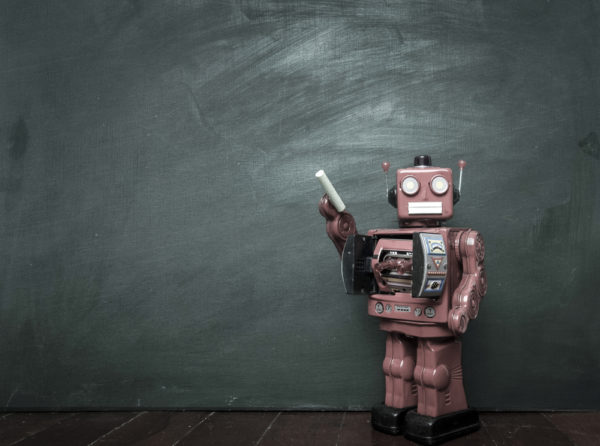One in 68 children in the U.S. has autism spectrum disorder (ASD). As an occupational therapist, I’ve seen firsthand how ASD makes life-changing impacts on a child’s ability to succeed in life and school, builds barriers for teachers trying to provide instruction, and creates hardship for families.
To help these students and their families, I created the Margow Model, which teaches practitioners, educators, and parents how to manage the difficulties experienced by the ASD-affected child using integrated, everyday strategies during the school day and home life.
The model also supports a combination of sensory integration, cognitive, and motor control theories to promote neuroplasticity. As these changes become functional skills that can be observed and measured through neuroimaging technologies such as QEEG, the intervention begins to integrate task-oriented strategies that have been shown through research to be effective for children with ASD.
Before addressing functional goals like activities of daily living and academic goals, there are four levels of goal development to activate:
1. Sensory processing includes the ability to receive and process visual, auditory, touch, proprioceptive (body position), and vestibular (balance and coordination) information. Attention, behaviors, and peer interactions are affected by the child’s ability to process stimuli. The goal is to create a sense of safety.
2. Visual presentation is the ability to interpret and use what’s seen in the environment, including cortical visual fields for focused tasks like writing and reading, and peripheral visual fields for navigating the environment.
3. Motor coordination is the ability of multiple muscles to work together simultaneously to perform movements. Motor planning is the capacity to envision, organize, sequence, and execute unfamiliar or complex body actions in a coordinated way, and is critical to efficient motor coordination.
4. Communication requires interpreting non-verbal and verbal cues to process and interact through expressive and receptive language. Integrated communication skills are necessary for effective interaction and socialization.
These fundamental steps are rolled out as part of a “step-up” program, as show in the diagram below.

(Next page: Assistive therapy tools and a real classroom example)
Assistive Therapy Tools
There are a growing number of assistive therapy (AT) tools to help students with ASD to work independently and navigate classroom routines. Not all AT tools are high-tech: They can be simple, adaptive tools like highlighters and organizers, automatic page-turners, or book holders. They can also be high-tech tools like robots.
Robots facilitate discovery and enhance opportunities for play, learning, and cognitive development. Using robots in play contexts can also help track changes in cognitive development by the child, and may contribute to improved cognitive understanding. Success with robot tasks can be a way for children to demonstrate their knowledge of cognitive concepts without the limitations of standardized testing.
Recent research has found that children with ASD are more comfortable interacting with robots than with humans. That being said, an anthropomorphic form is essential to robot design. Children with intellectual disabilities often struggle with traditional educational tools, but kids like robots because they seem like big toys. When children interact with robots, they are freed from the worry of being criticized for their behavior, and feel good about interacting with a robot because it’s “cool.” Robots also provide the sensory integration support that’s a best practice in working with kids with ASD. Here’s an example of how it works.
When Celia Met Milo
Celia, a seven-year-old girl with an autism diagnosis, manifested behavioral breakdowns (tantrums) when she couldn’t control her internal and external environment. She also had depression, an inability to express her frustrations verbally, and difficulty completing age-related functional skills at home and in the classroom. Celia lacked the essential language and motor skills to keep up with her cognitive abilities. I began working with her in August 2015, using the Margow Model and Milo, a humanoid robot that engages learners with autism to deliver research-based lessons that demonstrate appropriate social behaviors.
Milo provides a sequenced, organized method of resetting the language processing part of the brain, regardless of the child’s cognitive ability. I introduced Milo early in her intensive program, so Celia quickly became comfortable with him. He interacted at a processing speed designed for Celia to slow down her need for control and provided the non-judgmental, patient feedback required to practice these new skills and the visual opportunities to follow through by using the modeling on Celia’s iPad. Celia began to ask for Milo and to rely on him to develop her own verbal and executive skills.
Through the step-up approach of the Margow Model, Celia made significant progress. Milo became her sensory and language processing assistant whenever she needed to reorganize her functional skills. Using sensory processing tools as well as visual and auditory inputs, she gained a greater ability to perceive how to respond to the environment influenced her ability to understand her body in space, how to react to perceived stressors, and how to use language to make her needs known. By May 2016, Celia showed improvements in touch processing, impulsivity, arousal, and inhibitory responses. While her verbal processing was still weak, Milo gave Celia the strategies she needed to be successful.
With the challenges that children like Celia face, we need to do everything we can so intervention shifts from being hopeful to impactful. We can do this with an accurate diagnosis, new models like the one presented here, and the best in assistive technology. When children with ASD learn more effectively, they become more productive, and they and their families become happier.
- 5 ways school districts can create successful community partnerships - November 21, 2024
- Trump picks Linda McMahon to lead, and possibly dismantle, Education Department - November 21, 2024
- 6 ways to create engaging elementary learning spaces - November 20, 2024


